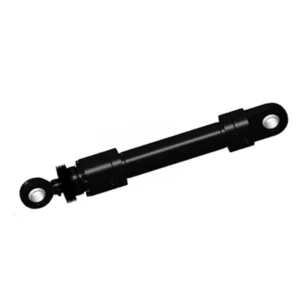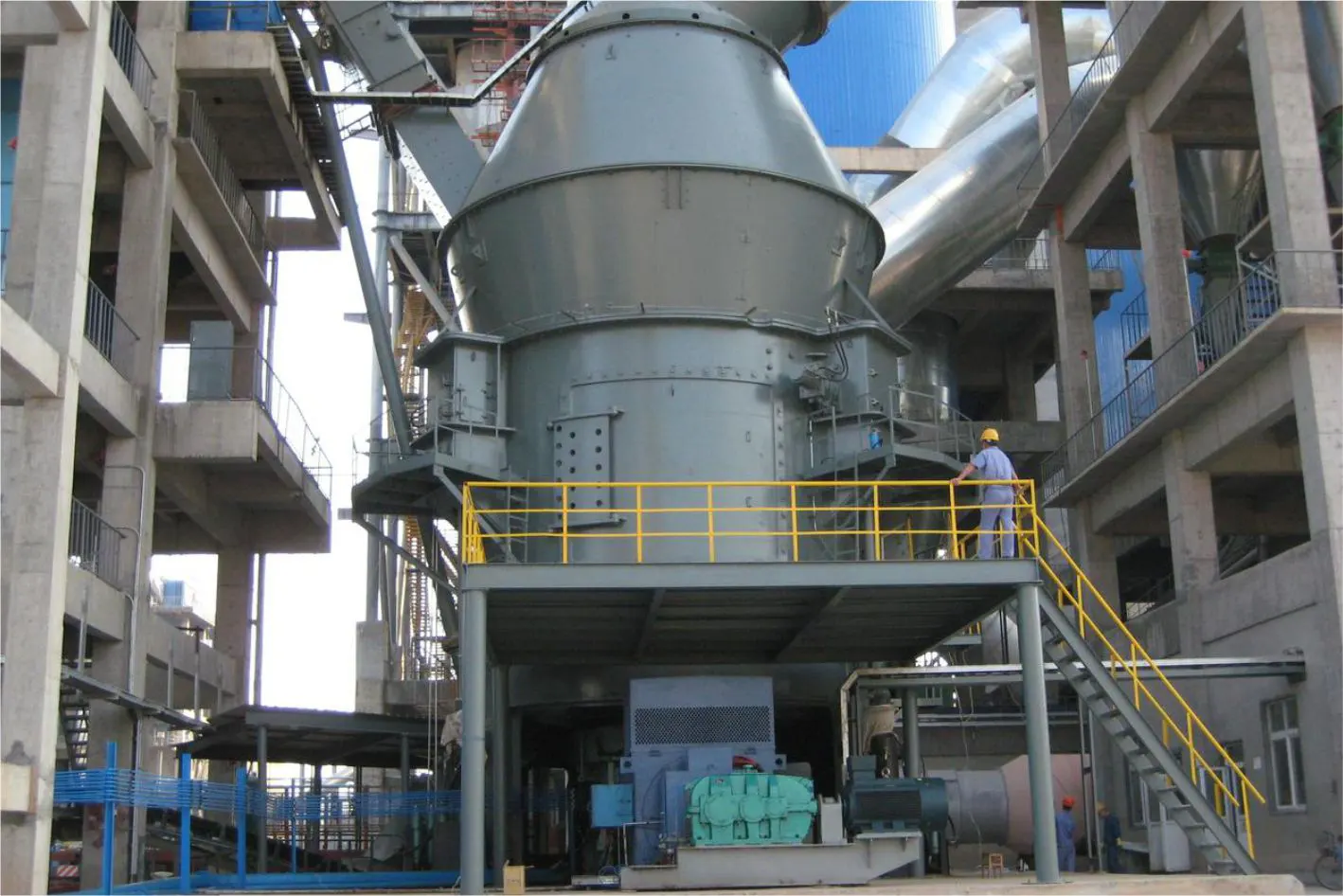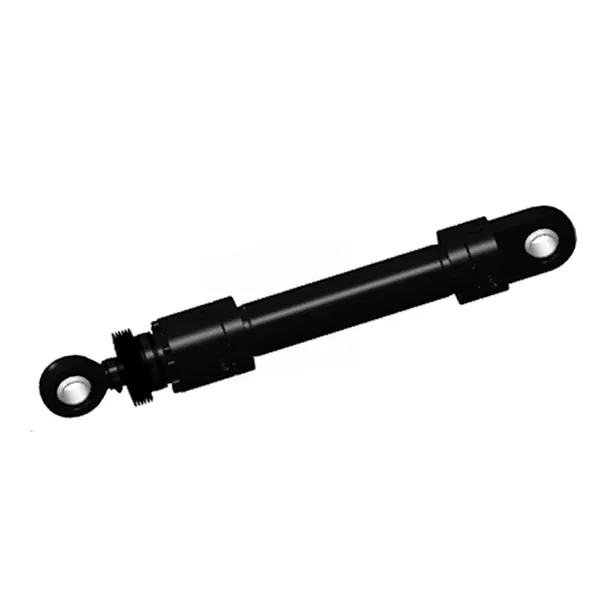Cement Equipment Feeding Cylinder
Fiind unul dintre producătorii, furnizorii și exportatorii de cilindri hidraulici, oferim cilindri hidraulici și multe alte produse.
Vă rugăm să luați legătura cu noi pentru detalii.
Mail:sales@hydraulic-cylinders.net
Producător, furnizor, exportator de cilindri hidraulici.
Cement Equipment Feeding Cylinder

The cement equipment feeding cylinder is a vital component in cement production, specifically designed to enhance efficiency and precision during the feeding process. This specialized cylinder plays a crucial role in cement plants, enabling controlled and accurate feeding of raw materials into the cement manufacturing machinery.
The cement equipment feeding cylinder is an indispensable component in cement production, enhancing efficiency and precision during the feeding process. With its robust construction, precise control, adjustable stroke length, and reliable sealing mechanism, this cylinder ensures accurate and consistent material flow, contributing to optimized cement manufacturing operations. By following the recommended usage methods and maintenance practices, operators can maximize the performance and longevity of the cement equipment feeding cylinder, ultimately improving the efficiency, productivity, and quality of cement production.
Cement Equipment Feeding Cylinder Key Characteristics:
- Robust Construction:
- The cement equipment feeding cylinder is constructed with high-quality materials to ensure durability and longevity in demanding cement plant environments.
- It can withstanding heavy loads and the rigors of continuous operation without compromising performance.
- Precise Control:
- This cylinder is designed to provide precise control over the feeding process, allowing for accurate and consistent material flow.
- It enables operators to maintain optimal feeding rates, improving efficiency and product quality.
- Adjustable Stroke Length:
- The cement equipment feeding cylinder offers adjustable stroke length, allowing flexibility in the volume of material delivered during each feeding cycle.
- Operators can fine-tune the stroke length based on specific production requirements and material characteristics.
- Reliable Sealing Mechanism:
- The cylinder incorporates a reliable sealing mechanism that prevents leakage and ensures a consistent feeding process.
- It minimizes material wastage and promotes a clean and efficient production environment.
Cement Equipment Feeding Cylinder Parameter:
| Product Name | Cement Equipment Feeding Cylinder |
| Features: | Promote the reciprocating movement of the grate bed of the grate cooler |
| Bore diameter: | 80mm~140mm |
| Rod diameter: | 45mm~80mm Stroke: ≤1200mm |
| Thrust force: | Max 385KN (Cylinder diameter 140mm/pressure 25MPa) |
| Cement Equipment Feeding Cylinder Applications: | Cement Equipment |
Rod diameter: 45mm~80mm
Stroke: ≤1200mm
(Cylinder diameter 140mm/pressure 25MPa)
Cement Equipment Cylinder Factory:

Usage Method Of Cement Equipment Feeding Cylinder:
- Installation:
- Follow the manufacturer’s guidelines to securely install the cement equipment feeding cylinder into the cement manufacturing machinery.
- Ensure proper alignment, attachment, and integration with the feeding system.
- Adjustment:
- Adjust the stroke length of the cylinder according to the desired feeding volume and rate.
- Refer to the manufacturer’s instructions for specific adjustment mechanisms and settings.
- Material Loading:
- Load the desired raw materials into the feeding system, ensuring they are correctly positioned for smooth and uninterrupted feeding.
- Avoid overloading the system, as it can adversely affect the performance and efficiency of the cement equipment feeding cylinder.
- Activation and Control:
- Activate the feeding system, engaging the cement equipment feeding cylinder to initiate the material flow.
- Use the control panel or interface to regulate the feeding process, adjusting the stroke length and speed as necessary.
How Do Hydraulic Cylinders Work?
Hydraulic cylinders are mechanical devices that use the power of hydraulic fluid to generate force and facilitate linear motion. They are commonly used in various applications, ranging from construction equipment to industrial machinery. Here’s a simplified explanation of how hydraulic cylinders work:
- Basic Components:
- Cylinder Barrel: It is the main body of the hydraulic cylinder, housing the piston and other internal components.
- Piston: A cylindrical component that divides the cylinder barrel into two chambers.
- Piston Rod: Connected to the piston, it extends outside the cylinder barrel and transmits the force generated.
- Seals: These prevent hydraulic fluid leakage between the piston and cylinder barrel, ensuring efficient operation.
- Hydraulic System:
- A hydraulic system comprises a hydraulic pump, control valves, and hydraulic fluid (typically oil).
- The hydraulic pump pressurizes the fluid, creating hydraulic energy that can be used to generate force.
- Two Chambers:
- The hydraulic cylinder has two chambers: the rod side (or pressure side) and the opposite side (or return side).
- The rod side is connected to the hydraulic pump, while the opposite side is connected to a reservoir or return line.
- Operation:
- When hydraulic fluid is pumped into the rod side chamber, it applies pressure on the piston, causing it to move outward.
- As the piston moves, it pushes the piston rod, generating linear force.
- Simultaneously, the hydraulic fluid from the opposite side chamber returns to the reservoir or through the return line.
- Directional Control:
- The direction of movement of the hydraulic cylinder can be controlled using directional control valves.
- These valves regulate the flow of hydraulic fluid to the appropriate chamber, determining the direction of piston movement.
- Force and Speed Control:
- The force generated by the hydraulic cylinder depends on the hydraulic pressure and the effective area of the piston.
- By adjusting the hydraulic pressure, the force output can be controlled.
- The speed of the cylinder’s movement can be regulated by adjusting the flow rate of hydraulic fluid into or out of the cylinder.
- Applications:
- Hydraulic cylinders are used in various applications that require linear force and motion, such as lifting, pushing, pulling, and bending.
- They are commonly found in construction equipment, material handling machinery, manufacturing systems, and automotive applications.
Capabilitatea și capacitatea fabricii:
(1) Montaj
Avem o platformă de asamblare independentă de cercetare și dezvoltare de primă clasă. Atelierul de producție a cilindrilor hidraulici are patru linii de asamblare semiautomate pentru cilindri de ridicare și o linie de asamblare automată a cilindrilor de înclinare, cu o capacitate de producție anuală proiectată de 1 milion de bucăți. Atelierul de cilindri speciali este echipat cu diverse specificații ale unui sistem de asamblare semi-automat de curățare, cu o capacitate de producție anuală proiectată de 200.000 și dotat cu echipamente celebre de prelucrare CNC, un centru de prelucrare, un echipament special de prelucrare a cilindrilor de înaltă precizie, o mașină de sudură robotizată, o mașină de curățare automată, o mașină de asamblare automată a cilindrilor și o linie de producție automată de vopsire. Echipamente critice existente de peste 300 de seturi (seturi). Alocarea optimă și utilizarea eficientă a resurselor de echipamente asigură cerințele de precizie ale produselor și satisface nevoile de înaltă calitate ale produselor.


(2) Prelucrare
Atelierul de prelucrare este echipat cu un centru de strunjire cu șină înclinată personalizat, un centru de prelucrare, o mașină de honuire de mare viteză, un robot de sudură și alte echipamente conexe, care pot gestiona prelucrarea tuburilor cilindrice cu un diametru interior maxim de 400 mm și o lungime maximă de 6 metri.

(3) Sudură

(4) Vopsire și acoperire
Cu linii automate de acoperire cu vopsea pe bază de apă cu cilindru de dimensiuni mici și medii, pentru a realiza încărcarea și descărcarea automată a robotului și pulverizarea automată, capacitatea de proiectare de 4000 de bucăți pe schimb;
Avem, de asemenea, o linie de producție semi-automată de vopsire pentru cilindri mari, acționată de un lanț de putere, cu o capacitate de proiectare de 60 de cutii pe schimb.


(5) Testarea
Dispunem de instalații de inspecție și bancuri de testare de primă clasă pentru a ne asigura că performanța cilindrului îndeplinește cerințele.

We are one of the best hydraulic cylinder manufacturers. We can offer comprehensive hydraulic cylinders. We also provide corresponding cutii de viteze agricole. We have exported our products to clients worldwide and earned a good reputation because of our superior product quality and after-sales service. We welcome customers at home and abroad to contact us to negotiate business, exchange information, and să coopereze cu noi!
Faceți un tur al fabricii noastre VR:
Faceți un tur al fabricii noastre VR cu următoarele
Cilindru hidraulic Aplicație:


